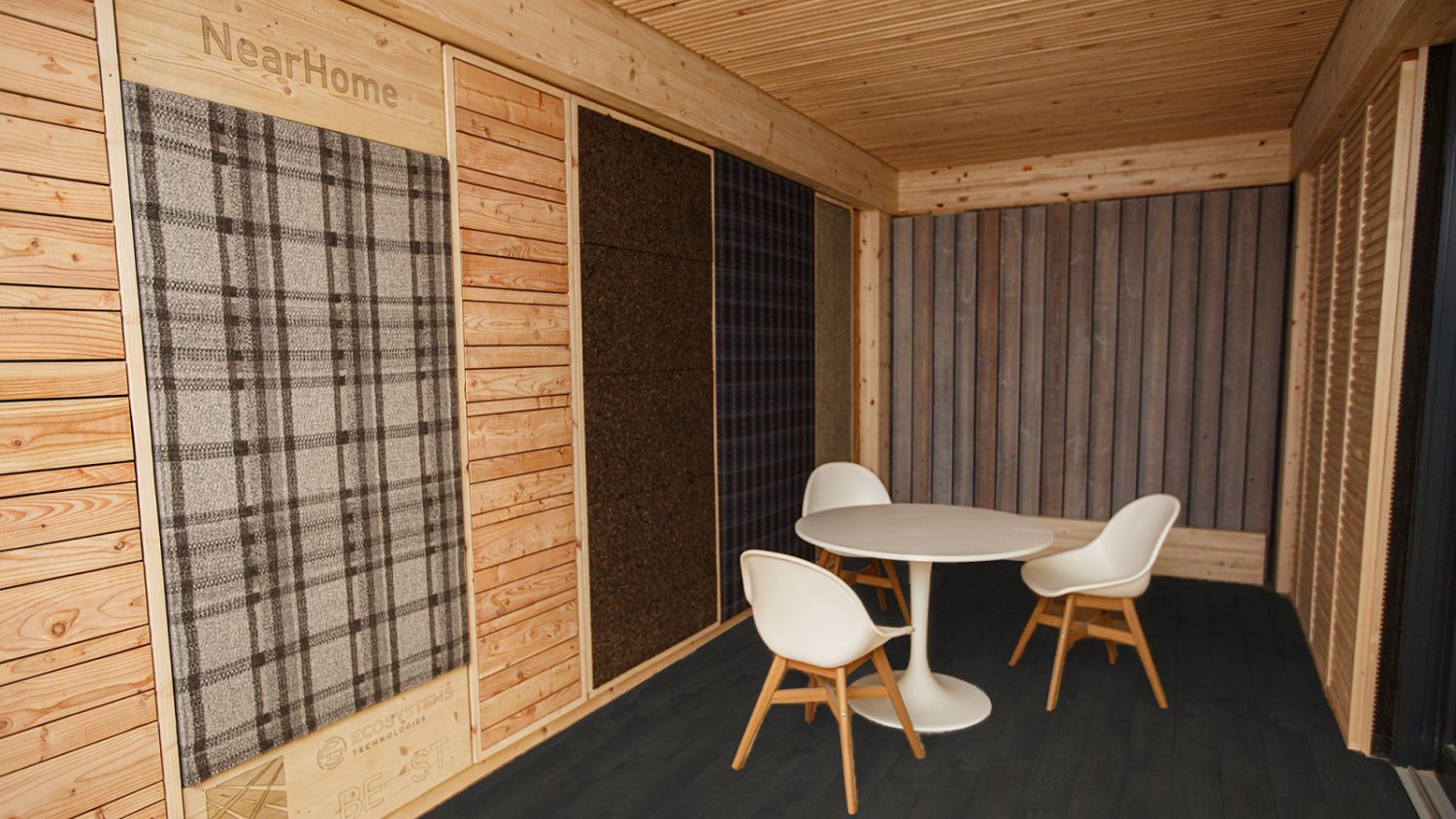
Built Environment – Smarter Transformation (BE-ST) has unveiled a new modular demonstrator that showcases how a timber kit of parts can help to retrofit offices.
Specialist timber manufacturer Ecosystems Technologies has created a prototype to encourage adoption of modular building among the Scottish business community.
The work forms part of the NearHome project, supported by Transport Scotland. NearHome is a response to the changing working patterns of a post-covid Scotland. It aims to provide businesses with the tools to transform and retrofit unused spaces into sustainable, energy-efficient out-of-town alternatives to city centre offices.
Carbon savings
Initial indications from the lifecycle analysis of the NearHome approach suggest the construction of a typical office building would produce five times more carbon dioxide equivalent compared with the modular, timber kit of parts.
The NearHome approach produces 535kg CO2e per sq m floor area during construction. That compares with 2,953kg CO2e per sq m floor area for a typical traditional office building.
Free guide available
Alongside the physical unit, a free open source guide from ThreeSixty Architecture aims to help organisations to replicate the design. The first office spaces already commissioned using the design are expected to be occupied later this year.
The University of Edinburgh conducted a study to review the potential of using geographic information system (GIS) data to determine the best possible positions for future sites. Researchers looked at the use of existing datasets, such as Scottish Census data, to identify locations for NearHome hubs based on demographics, economic factors and travel times.
Kit flexibility
Lynsey Bryson, head of digital programmes at BE-ST, said: “NearHome has the potential to change how we think about the retrofit of non-domestic buildings going forward. We know that a one-size-fits-all approach is not going to be possible to suit the various building typologies we use in Scotland, but the modular design offers a flexible, sustainable solution that can be adapted on a case-by-case basis.
“While we were originally looking specifically at workplaces, the flexibility of the kit has shown that it could in fact be used for a range of different purposes.”










